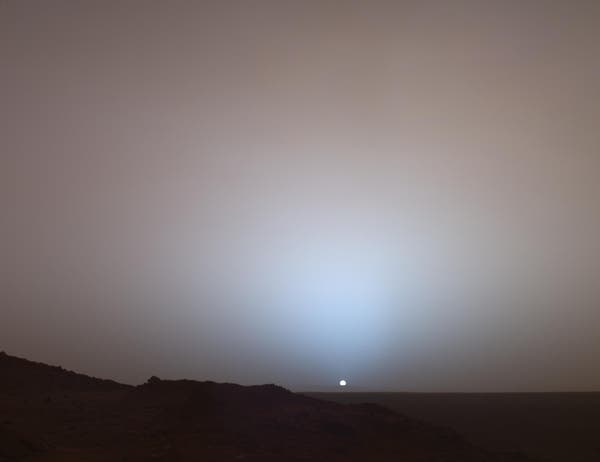
A while ago I posted a piece on NASA‘s Spirit Rover last transmitted photo from Mars, before it ultimately died off completely after more than seven valiant years of service, time in which incredible volumes of photographs and other important metrics from the surface of the red planet have been fed.
Like I said, a lot of photos from Mars have been wired back to Earth, and among these you can easily find a few gems, including the one above, at the beginning of this very post. Taken on May 19, 2005, the Spirit Rover captured this incredible glimpse of the sun setting below the rim of Gusev crater on Mars. Here’s some additional info from NASA, filled with the scientific details behind it.
Sunset and twilight images are occasionally acquired by the science team to determine how high into the atmosphere the Martian dust extends, and to look for dust or ice clouds. Other images have shown that the twilight glow remains visible, but increasingly fainter, for up to two hours before sunrise or after sunset. The long Martian twilight (compared to Earth’s) is caused by sunlight scattered around to the night side of the planet by abundant high altitude dust. Similar long twilights or extra-colorful sunrises and sunsets sometimes occur on Earth when tiny dust grains that are erupted from powerful volcanoes scatter light high in the atmosphere.





![Sunset on Mars [AMAZING PHOTO] – 201109sunset on mars](https://www.plazajournal.com/wp-content/uploads/2024/02/201109sunset-on-mars.jpg)



